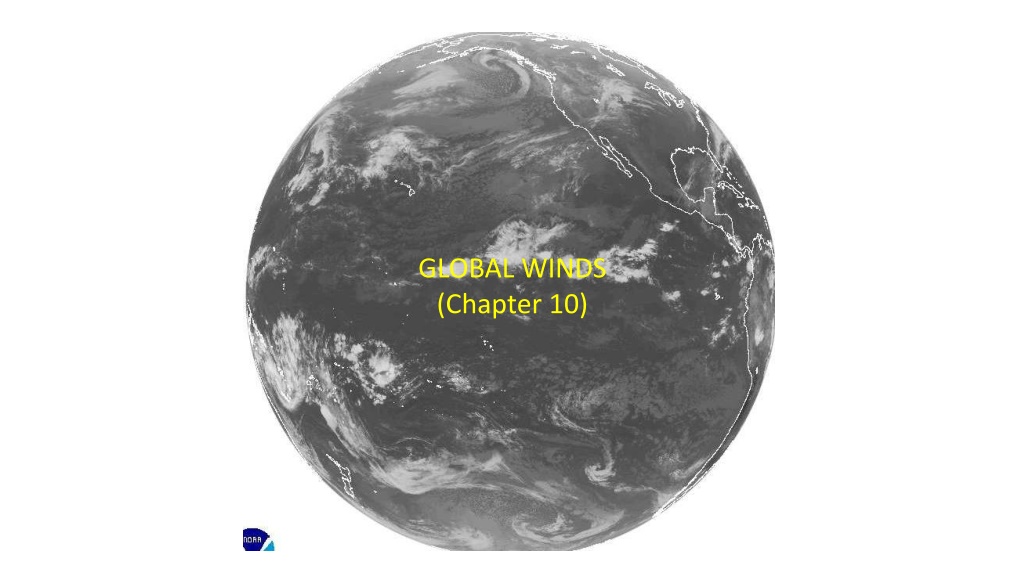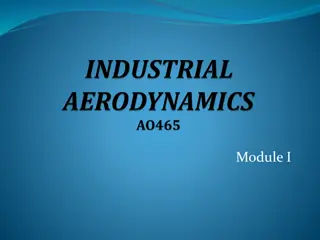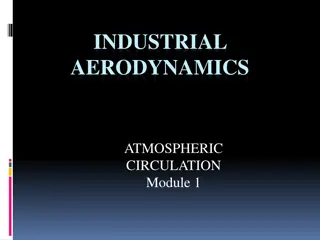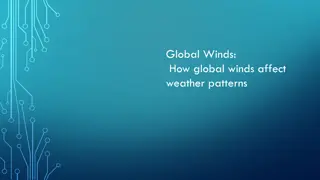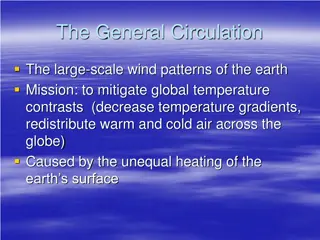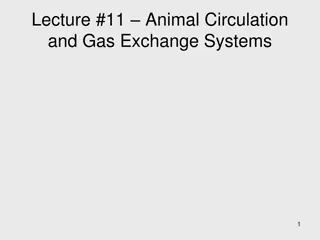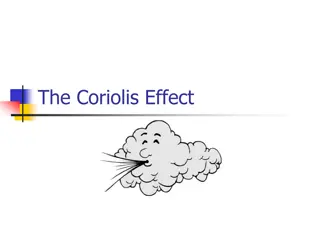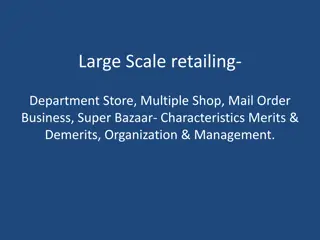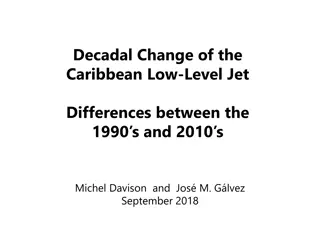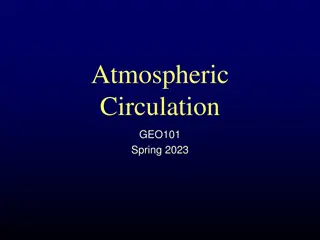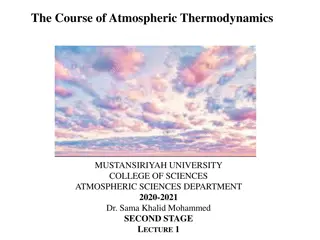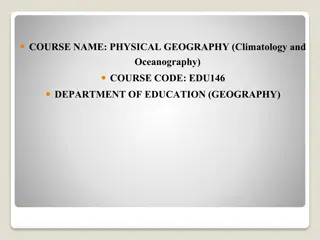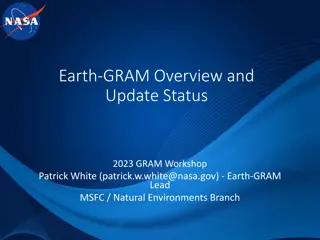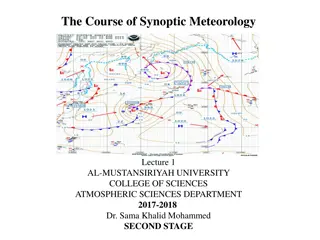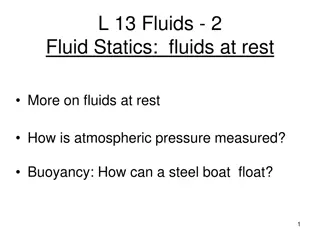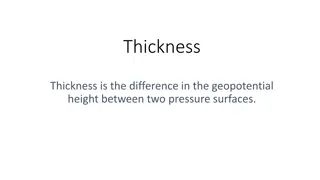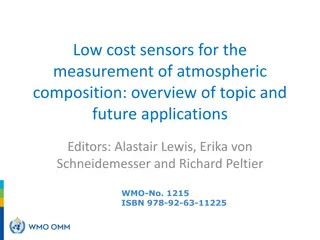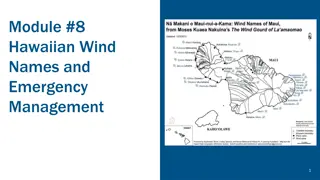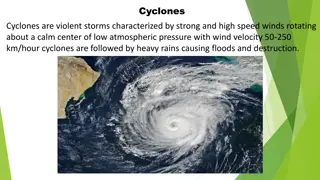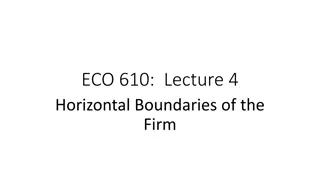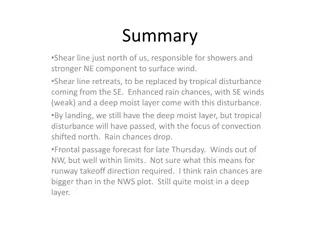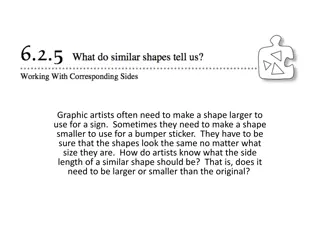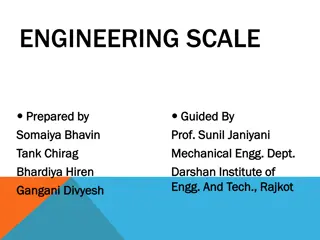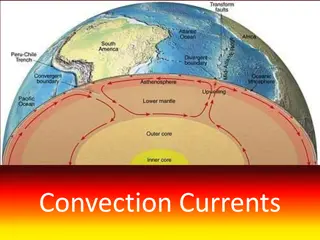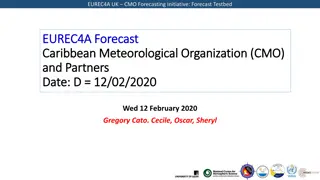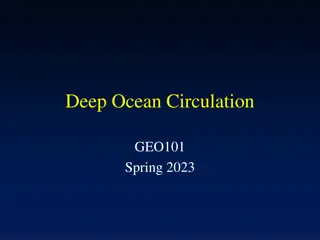Understanding Large-Scale Winds and Atmospheric Circulation
Large-scale prevailing winds, such as the Hadley Cell, vary by latitude. These winds drive global atmospheric circulation, with rising air at the equator, sinking air at 30 degrees, and trade winds in between. By studying wind patterns, we gain insights into climate systems and weather phenomena.
Uploaded on Sep 16, 2024 | 0 Views
Download Presentation

Please find below an Image/Link to download the presentation.
The content on the website is provided AS IS for your information and personal use only. It may not be sold, licensed, or shared on other websites without obtaining consent from the author. Download presentation by click this link. If you encounter any issues during the download, it is possible that the publisher has removed the file from their server.
E N D
Presentation Transcript
GLOBAL WINDS (Chapter 10)
Names of Latitude Bands
Non-Rotating Homogeneous Planet surface wind follows PGF
Rotating Homogeneous Planet 60 N H 30 N Coriolis causes air parcel to turn to its right pgf Hadley Cells L 0 Coriolis causes air parcel to turn to its left pgf H 30 S tropopause 60 S
Hadley Cell (N. Hemisphere) sinking As air aloft moves poleward, Coriolis turns the air parcel to its right. The air piles up aloft at 30 N. 30 N rising Equator
Rotating Homogeneous Planet H Polar Easterlies (Polar Front) L 60 N Midlatitude Westerlies H 30 N (Horse Latitudes) NE Trades (Intertropical Convergence Zone) Hadley Cells L (ITCZ) 0 SE Trades H 30 S Midlatitude Westerlies (Polar Front) L 60 S Polar Easterlies H
Rotating Homogeneous Planet
Columbus First Voyage (149293) Mid-latitude Westerlies
Average Precipitation Variation by Latitude (Chap. 10, pp. 262 272)
Quick SummaryLarge-scale Winds (Chapter 10): Large-scale prevailing winds vary by latitude about every 30 degrees. The Hadley Cell is a very persistent feature associated with rising air at the equator, sinking air at 30 , and easterly trade winds at the surface from 0 30 in each hemisphere. The latitude zone from 30 60 has prevailing westerly winds. Polar latitudes have highly variable winds that tend to be easterly, with cold, high pressure systems over the poles. This simple, zonal (west east) wind pattern is altered by the presence of coasts, continents, and mountain ranges.
